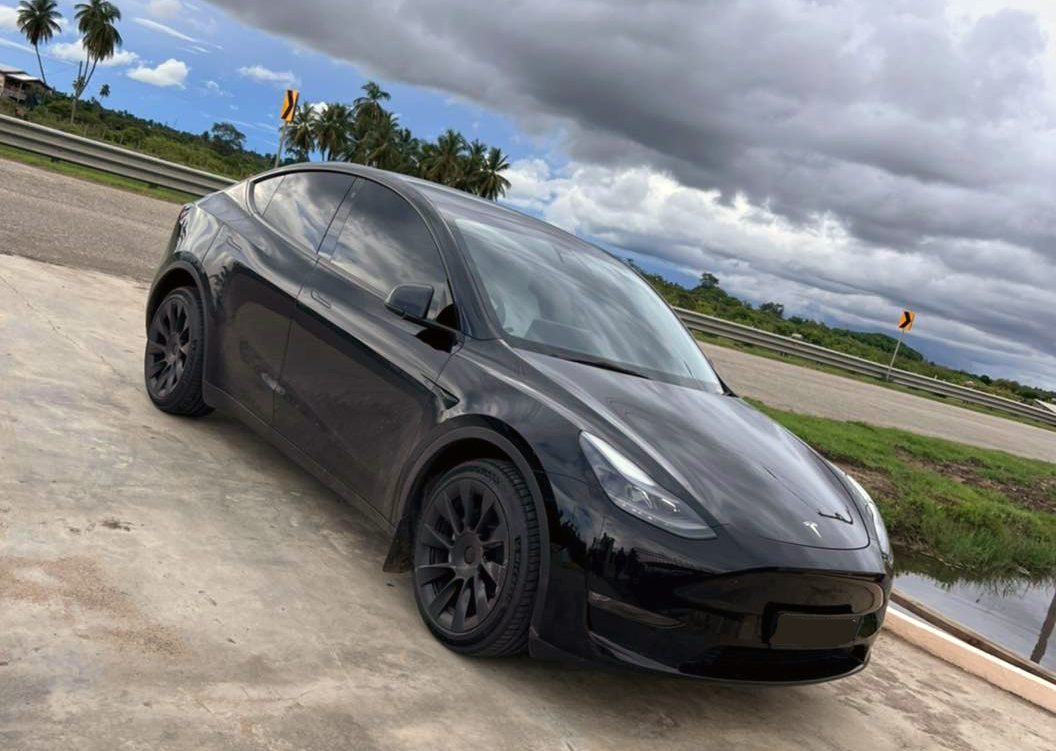With the direction the world is heading, investing in an electric vehicle (EV) is becoming the more cost-effective and environmentally-friendly choice. And if the skyrocketing fuel prices do not offer enough motivation to switch from motorcars that run on gasoline or diesel, the benefits currently being enjoyed by Guyana’s first Tesla owner would offer more perspective.
With the present lack of supporting infrastructure for EVs, largescale importation would have to wait a while. But the experience of Guyana’s very own Tesla owner gives an idea of what awaits the new oil producing nation, as it transitions.
Pushing the limits of the Tesla Model Y’s mileage capacity, the owner, Samuel Chandool managed to drive 375 kilometers (km)/233 miles from Vreed-En-Hoop, Region Three all the way to Skeldon, Region Six on just 60 kilowatt-hours (kwh).
And that amounts to merely GYD$2,605 (at a charge of GY$43.43 per kwh), a small fraction of what would be needed if the vehicle ran on gasoline.
Chandool told OilNOW that he started the journey with a charge of 99%; by the time they arrived at Skeldon, the battery had decreased to 60%. He noted that the Tesla Model Y can travel up to 330 miles on a single charge. This, he said, is not only dependent on its efficient system but efficient driving practices too.
First Tesla imported as Guyana pushes electric car industry | OilNOW
“Driving efficiently means driving less aggressive… driving just as it is done in a gasoline car… smooth acceleration, following speed limits and only exceeding them ever so often,” he explained. “My speed stayed between 77-100 kilometers per hour for the trip.”
“We took the trip with an Audi Q5, and the driver drove very fast and did not follow any speed limits but only arrived 10 minutes before us.”
Making the return to Vreed-en-Hoop, Chandool said that he was able to increase his speed, to between 110mph and 120mph because of the wind direction.
“You lose more efficiency when you have headwind,” he added, noting that all these factors are a key part of using any electric vehicle to its optimal capacity.
The car enthusiast and businessman said that Guyana’s tropical climate is ideal for EVs with little to no issues to be experienced with the batteries.
And with the price of gas skyrocketing, not only in Guyana and across the globe, Chandool remains adamant that an EV is the way to go.
He encouraged Guyanese to head the EV route, ignoring naysayers. If one does not desire the Tesla, he recommended the Nissan Leaf EV’s – like the first one ever acquired by the government in 2020.
The first Nissan Leaf models (2011-2012) are retailing for as little as GY$1.5 million with some local car dealers. This is lot less than Guyanese typically pay for petroleum fueled cars, given duty and excise taxes. The government has put incentives in place to support the EV industry in the form of reduced import taxes. With an EV that is more than four years, no duties and taxes are to be paid. However, with those EVs less than four years old, only 14% VAT is paid.
On paper, the affordable Nissan Leaf goes 100 miles on a single charge. But the lack of charging infrastructure is where the current hiccup lies. Guyana has only just started the process of building this out. The Guyana Energy Agency (GEA) will be deploying EV charging stations in specific regions considering the fact that over 100 vehicles are driving the streets of the country. Six companies are competing for the contract.




